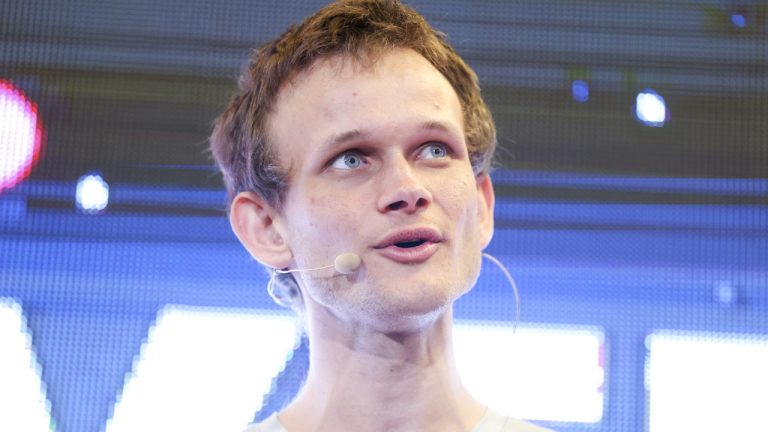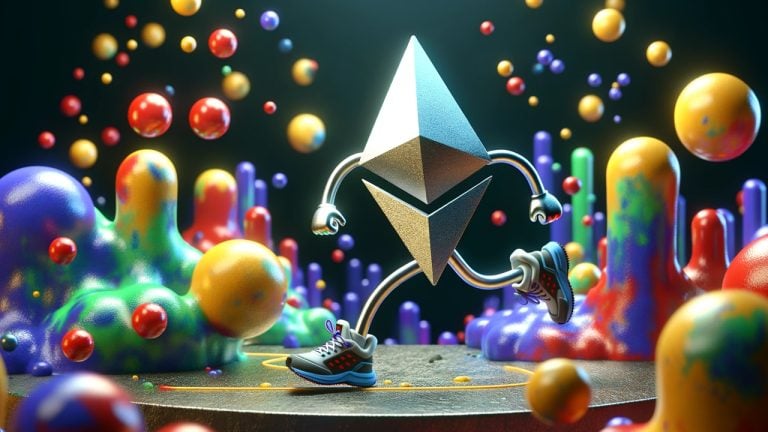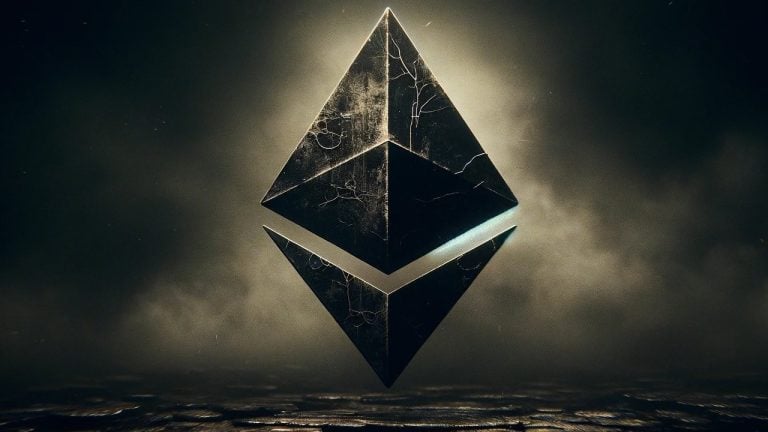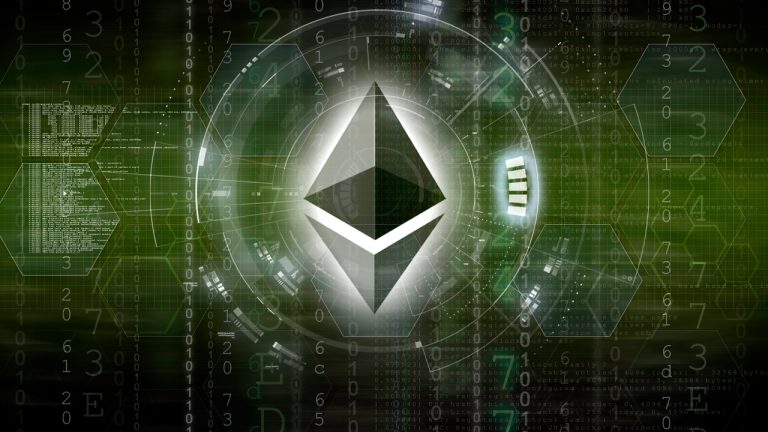 In a recent deep dive into Ethereum’s future scalability and infrastructure, Ethereum co-founder Vitalik Buterin discusses the latest introduction of blobs and their significant role in the evolution of layer two (L2) rollups. This pivotal development marks a transition towards more efficient internal scaling and parallelization within Ethereum’s ecosystem, according to Buterin. Scaling Ethereum: Buterin […]
In a recent deep dive into Ethereum’s future scalability and infrastructure, Ethereum co-founder Vitalik Buterin discusses the latest introduction of blobs and their significant role in the evolution of layer two (L2) rollups. This pivotal development marks a transition towards more efficient internal scaling and parallelization within Ethereum’s ecosystem, according to Buterin. Scaling Ethereum: Buterin […] Following the debut of the Dencun upgrade and Ethereum blobs, enthusiasts have devised methods to embed data akin to how Ordinal inscriptions operate. Since this development, inscription-based activities now account for over 40% of blob transactions, leading to a significant increase in network activity. This uptick has resulted in a congestion of blob transactions, pushing […]
Following the debut of the Dencun upgrade and Ethereum blobs, enthusiasts have devised methods to embed data akin to how Ordinal inscriptions operate. Since this development, inscription-based activities now account for over 40% of blob transactions, leading to a significant increase in network activity. This uptick has resulted in a congestion of blob transactions, pushing […] The Dencun upgrade was seamlessly integrated into the Ethereum mainnet at 9:55 Eastern Time (ET) on March 13, 2024. The upgrade officially went live at Beacon slot 8626176. Ethereum’s Leap Forward with Dencun Upgrade Expected to drastically lower the transaction costs for layer two (L2) networks, Dencun introduces vital improvements aimed at boosting Ethereum’s scalability. […]
The Dencun upgrade was seamlessly integrated into the Ethereum mainnet at 9:55 Eastern Time (ET) on March 13, 2024. The upgrade officially went live at Beacon slot 8626176. Ethereum’s Leap Forward with Dencun Upgrade Expected to drastically lower the transaction costs for layer two (L2) networks, Dencun introduces vital improvements aimed at boosting Ethereum’s scalability. […] Ethereum has shed a significant part of its supply since the London upgrade, applied in August 2021. According to ultrasound.money, a portal that records several statistics associated with the ETH burn, over 4 million ether (3.2%) have been removed from the network since the adoption of EIP-1559, which changed how fees are calculated. EIP-1559 Burns […]
Ethereum has shed a significant part of its supply since the London upgrade, applied in August 2021. According to ultrasound.money, a portal that records several statistics associated with the ETH burn, over 4 million ether (3.2%) have been removed from the network since the adoption of EIP-1559, which changed how fees are calculated. EIP-1559 Burns […]
Consensys zkEVM Linea head Nicolas Liochon says speed and execution will continue to increase as it tweaks its Ethereum layer 2 scaling solution.
Zero-knowledge proof (ZK-proofs) solutions have proved critical in helping scale the Ethereum ecosystem, but proto-danksharding is expected to drastically reduce the cost of roll ups according to Consensys’ zkEVM Linea head Nicolas Liochon.
Speaking exclusively to Cointelegraph Magazine editor Andrew Fenton during Korea Blockchain Week, Liochon estimated that proto-danksharding could further reduce rollup costs by 10 times.
Proto-danksharding, also known by its improvement proposal identifier EIP-4844, is aimed at reducing the cost for rollups, which typically batch transactions and data off-chain and submit computational proof to the Ethereum blockchain.
The Ethereum Foundation is yet to nail down an expected launch data for proto-danksharding but development and testing is still ongoing.
As Liochon explained, Linea delivers 15 times cheaper transactions compared to those made on Ethereum’s layer one, but rollups are still limited by the fact that transactions are posted in calldata in Ethereum blocks.
According to Ethereum’s documentation, rollups are still expensive in terms of their potential because calldata is processed by all Ethereum nodes and the data is stored on chain indefinitely despite the fact that the data only needs to be available for short period.
EIP-4844 will introduce data blocks that can be sent and attached to blocks. The data stored in blobs is not accessible to the Ethereum Virtual Machine and will be deleted after a certain time period - which is touted to drastically reduce transaction costs.
“In reality, the cost of rollups is down to data availability. We are writing all the data to layer one which is why we have exactly the same security. But it’s expensive, it represents 95% of the cost.”
Liochon said that Linea’s prover, which essentially handles the off-chain computation that verifies, bundles and then creates a cryptographic proof of the combined transactions, only represents a fifth of the cost.
This highlights the major hurdle in making ZK-rollups the go-to scaling solution for the Ethereum ecosystem as opposed to other solutions like Optimistic rollups.
Liochon also said that Linea aims to be a general use ZK-rollup that will be used for a variety of decentralized applications and solutions within the Ethereum ecosystem.
"We are a generic rollup. We don't want to have a specific use case or specific domain. It's quite important to support all type of applications, including DeFi, gaming and social."
As Cointelegraph previously reported, Consensys has completed the launch of Linea in Aug. 2023, having onboarding over 150 partners and bridging more than $26 million in ETH.
Magazine: Here’s how Ethereum’s ZK-rollups can become interoperable
 According to a recent Ethereum Core development meeting on Dec. 8, developers disclosed that the next Ethereum hard fork, called Shanghai, could be implemented by March 2023. It’s been suggested that the Shanghai hard fork will be able to manage the network’s staked ethereum withdrawals. Ethereum Devs Aim for Hard Fork Target ‘Around March-ish’ On […]
According to a recent Ethereum Core development meeting on Dec. 8, developers disclosed that the next Ethereum hard fork, called Shanghai, could be implemented by March 2023. It’s been suggested that the Shanghai hard fork will be able to manage the network’s staked ethereum withdrawals. Ethereum Devs Aim for Hard Fork Target ‘Around March-ish’ On […]
Despite Layer-2s offering relatively cheap transactions, Vitalik Buterin said that all transactions need to be under $0.05 to be truly acceptable.
Ethereum (ETH) co-founder Vitalik Buterin believes that Layer-2 transaction fees need to be under $0.05 to be “truly acceptable.”
Buterin made the latest comments in response to a Twitter post from the Bankless podcast host Ryan Sean Adams, who shared a screenshot of the average transaction fees for eight Ethereum Layer-2 platforms.
The data is from L2fees.info, a website that compares the cost of Ether’s Layer-1 network in comparison to Layer-2s built on top of it.
The only Layer-2 to meet Buterin’s desired transaction fee under $0.05 is the Metis Network at $0.02, however a token swap on the platform still costs $0.14. Fees sharply increase from there, at $0.12 per transaction on Loopring and going all the way to $1.98 per transaction on the Aztec Network.
Ethereum’s Layer-1 is relatively affordable at present at $3.26 per transaction and a whopping $16.31 per token swap, however that only lasts until Yuga Lab’s releases another collection of NFTs where fees can skyrocket to $14,000 per mint.
Adams emphasized the importance of Layer-2s for keeping Ethereum affordable, noting that “this is Ethereum and it's not expensive,” but Buterin suggested it wasn’t there yet:
“Needs to get under $0.05 to be truly acceptable imo. But we're definitely making great progress, and even proto-danksharding may be enough to get us there for a while!”
Needs to get under $0.05 to be truly acceptable imo. But we're definitely making great progress, and even proto-danksharding may be enough to get us there for a while!
— vitalik.eth (@VitalikButerin) May 3, 2022
Buterin’s affordable transaction goal is a long held one that he first stated during an interview in 2017 that “the internet of money should not cost more than 5 cents per transaction."
In January, Buterin said he still stood by this goal “100%” as part of a lengthy Twitter thread going over some of the key things he’s said or written over the past 10 years.
“That was the goal in 2017, and it's still the goal now. It's precisely why we're spending so much time working on scalability” Buterin said.
Related: ETH gas price surges as Yuga Labs cashes in $300M selling Otherside NFTs
The proto-danksharding or EIP-4844 that Buterin referred to as putting downward pressure on fees in his response to Adams, is a recently proposed upgrade to Ethereum that will see key elements of danksharding — a new and simplified design of previous sharding designs — implemented onto the network without any sharding upgrades being initiated.
Proto-danksharding will enable a new type of transaction dubbed the “blob-carrying transaction” that carries an extra 125KB worth of data (blob) that cannot be accessed by the Ethereum Virtual Machine (EVM). The general idea is that this will help the network scale significantly in the short term while reducing congestion and competition for gas usage, thus lowering gas fees.
“Because validators and clients still have to download full blob contents, data bandwidth in proto-danksharding is targeted to 1 MB per slot instead of the full 16 MB. However, there are nevertheless large scalability gains because this data is not competing with the gas usage of existing Ethereum transactions,” Buterin wrote in a blog post last month.
While Ethereum’s roadmap is notoriously flexible the shard chains upgrade is slated for sometime in 2023 well after the merge of the Mainnet with the Beacon Chain.
Shard chains provide avenues to horizontally and cheaply store data across the network, which in turn spreads the load, reduces congestion and increases transaction speeds. Both Ethereum and its Layer-2s are expected to benefit from this dramatically.